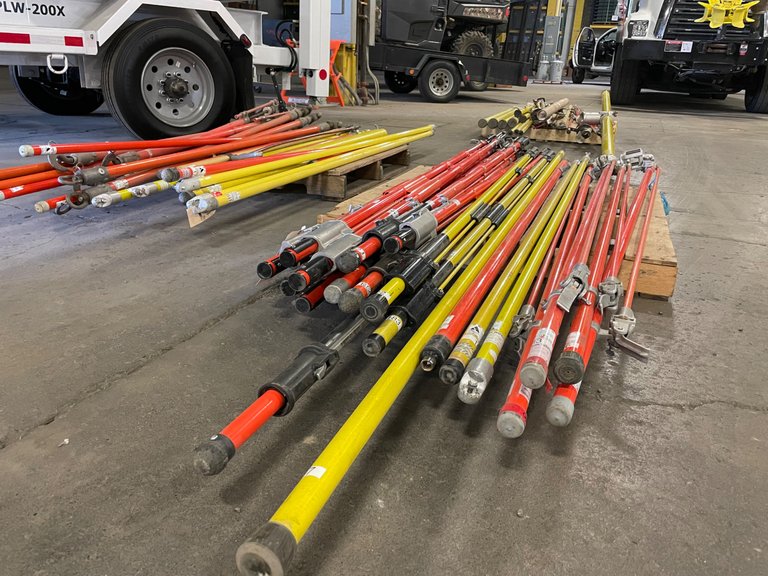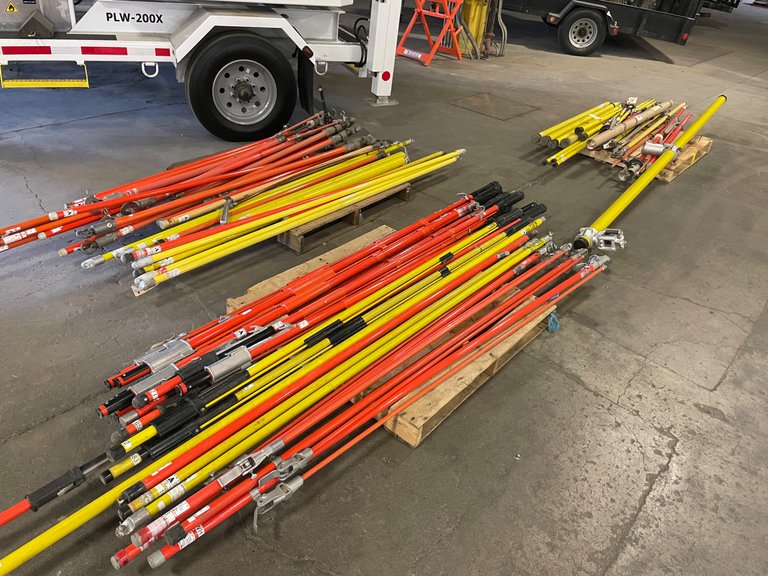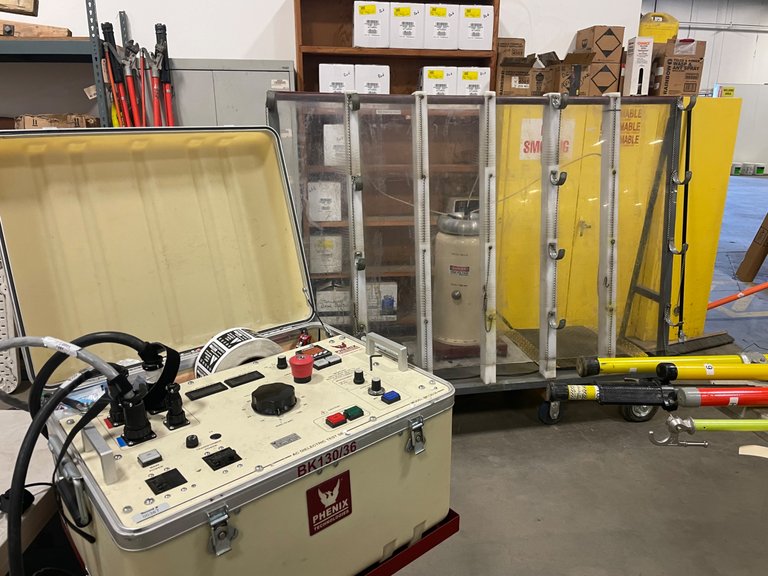Every two years we bring a company in to test our hotsticks. This is a requirement by OSHA (Occupational Health and Safety Administration). Hotsticks are used to when we work on energized powerlines and various electrical equipment. If a hotstick isn’t properly cared for and gets damaged, the electricity could travel down the hotstick and electrocute the Lineman using it.

There is a hotstick or attachment for everything that needs to be done when working on the electrical grid. Some have interchangeable attachments, some extend out to 45 feet, some have cutters and crimpers, and some you can even put sockets on to tighten bolts. Maybe one day I will go through a few of them show you tell you all what they are used for, but today we are going to talk about how they are tested.

Hotsticks are made from a foam filled fiberglass with a protective coating on the outside. If the coating gets damaged enough it can cause the stick to fail. The guy doing the testing visually inspects the hotsticks, wipes them down, and makes sure they work properly. Then he begins the dielectric testing on this rack.

The sticks are laid in the rack and a little chain is wrapped around them every foot. Each stick is tested at 75,000 volts per foot for a time period of 3 minutes. Then he gets the hotsticks wet and tests them at 75,000 volts for 1 minute.

4 sticks can be tested at one time. Once they are all in place in the chains wrapped around them, he cranks up the voltage on his dielectric testing machine. The buzzing/crackling sound is pretty loud during the testing.

It doesn’t happen often but when a hotstick fails the test, a super loud POP can be heard echoing through the shop. If a stick fails it is set aside, tagged, and then taken out of service and sent off to get repaired. After the repairs are made it gets tested again to ensure the repairs fixed the problem.
It took this guy 3 days to test all of the hotsticks we have. I would say there are close to 150 in total, probably more. Our tool room is loaded with a bunch of spare hotsticks and each of the 3 crews carry around 20 in total amongst their trucks. Our bigger bucket trucks carry 10 or more since those are the ones we use when doing bigger hotstick jobs. Out of all those hotsticks that got tested we only had 8 fail. I would say that is a pretty good percentage, wouldn’t you.

Your Random
Dose of...





The ones that failed, could they have still been used or were they for sure bad? What would happen if one of the crew used one that was going to fail the test? I presume they are not failing bad enough that you guys would be in serious danger using it?
The ones that failed were used up until the time of testing. Most of the sticks are 8 foot long. We work on lines that are 24,900 volts. A one foot section tested at 75,000 volts fails doesn’t mean the entire 8 foot stick would allow voltage to travel all down the stick. If there was a big gouge in the stick the whole length of it, then yeah.
We can use them to work on 115,000 volt lines due to their length. So technically just a 2 foot section of stick has enough insulation to keep us safe. But no thanks, I will use the whole 8 feet. Lol. These sticks take a beating bouncing around in trucks. We keep them in bags or in PCV tubes to keep them from damaging each other.
Ah okay that makes sense. Essentially a good 8 foot stick would have a max of 525kv if each foot is rated to 75kv, since the 8th foot would would hit the end? Not that an 8ft stick is used on that high of a line but just thinking max it could insulate from.
Exactly, testing at 75kv per foot leaves plenty of room for error if a portion of the stick was to get damaged or dirty. Plus we have a Minimum Approach Distance we have to go by also.
I have no idea what the testing failure rate usually is. 8 out of 150 is about 5%, and I roll enough ones on a d20 in Dungeons & Dragons to not feel comfortable with that rate!
A nasty gouge in a 1 foot section causes the stick to fail. The other 7 feet can be perfectly fine. According to the testing the stick is still good for over 500,000 volts. Some sticks were removed due to missing/loose hardware also.
Posted via D.Buzz